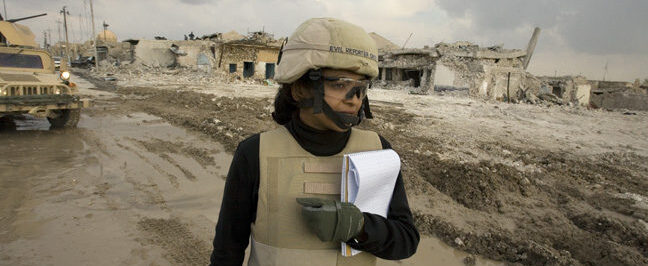The boat docked at Uros Island. Jose came to meet us with a smile on his face and a totora reed in his left hand.
Totora are the living reeds that float around Lake Titicaca, a massive body of water between Peru and Bolivia that is almost 13,000 feet in elevation. It’s known as the highest navigable lake in the world.
I’d wanted to visit ever since I was a child and my father told me stories about the magical lake in South America. He’d always wanted to visit Titicaca. He made it as far as Cusco and Machu Picchu but never made it to the lake. I was feasting on its majesty for both father and daughter.
My friend Aditi and I made the journey to Titicaca on a chilly December day. We boarded a small boat full of visitors and made our way first to Jose’s floating island.
Jose lives in a small hut on an floating island built with totora. His people have been living that way for hundreds of years, ever since they were forced out of their lands by the Incas. They fish and make handicrafts for tourists (like us) to buy.
The Uros people have faces tanned heavily by the sun — the high altitude makes for high rates of skin cancer. They lead lives from another era. Simple. Honest. Back-breaking at times. Jose let me enter his hut. There was nothing in it but a floor of reeds, a bed and a small black and white television. He thanked former Peruvian President Alberto Fujimori for bringing solar panels to the floating islands. Now he can watch TV and play music.
Oh and one other important difference these days: Human waste is taken by boat to dispose of on the mainland. That way, the water stays clean. Seemed fitting they would do that.
Jose explained how he and his family have to beef up the island as the reeds disintegrate. He then held up one of the reeds that look almost like sugarcane but are much softer. He peeled the outer layers and bit into the end. “Titicaca banana.” Ha.
From the floating islands, we traveled two hours to Taquile Island and marveled at the vastness of the lake. The people who live here also lead the simplest of lives, thriving on quinoa and vegetables they grow there. And trout — originally introduced to Titicaca from Canada — from the lake, though they must go to shallower waters for that. The water here is too cold and deep for fish.
There’s little pollution here. Or stress. Maybe that’s why the average life span is 95. Or so said our guide, Julio.
I thought of all the people I met on that trip that day as a new year is about to come upon us. I report on so much strife in the world. Of war, death, rape, torture. Of climate change and extreme poverty. Of sadness. Grief. And inhumanity. Sometimes, I crave the simplicity of the Uros.
I hope the world becomes a better place in 2014. Maybe there are some crucial lessons to learn from the people of Titicaca.








You’re the grseeatt! JMHO